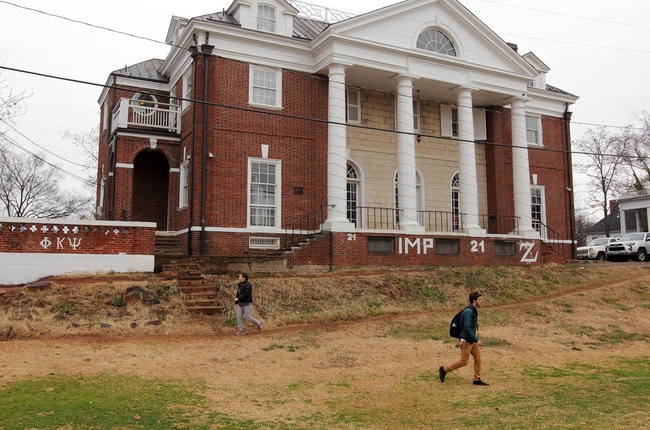In unfortunate timing for Jann Wenner, who just put Rolling Stone magazine up for sale, the 2nd Circuit Court of Appeals has revived a defamation lawsuit over the magazine's infamous story about the gang rape of a freshman identified as "Jackie" at a University of Virginia campus fraternity.
For that since-retracted article from author Sabrina Erdely, Rolling Stone has faced several lawsuits including one by University of Virginia associate dean Nicole Eramo, which went to trial and was later settled for $1.65 million.
Another lawsuit came from members of Phi Kappa Psi, but in June 2016, U.S. District Judge Kevin Castel granted a motion to dismiss, finding "the article's details about the attackers are too vague and remote from the plaintiffs' circumstances to be 'of and concerning' them."
In an opinion (read here), Judge Katherine Forrest, sitting on the 2nd Circuit panel by designation, decides the lower court prematurely rejected claims from George Elias and Ross Fowler while correctly rejecting those from Stephen Hadford.
"[W]hile it is a close call, we conclude on balance that the complaint plausibly alleged that the purportedly defamatory statements in the Article were 'of and concerning' Elias and Fowler individually," she writes ."At this stage of the litigation, Plaintiffs need only plead sufficient facts to make it plausible—not probable or even reasonably likely—that a reader familiar with each Plaintiff would identify him as the subject of the statements at issue. With regard to the Article, Elias and Fowler have met this burden."
As far as Elias, he alleged to have been identified in the story because he was a fraternity member on the night in question and was known to live on the second floor where the rape was reported to have occurred. His claims were initially dismissed upon the observation that the article contained no details about the bedroom, but his suggestion of having the only bedroom at the fraternity house large enough to fit the description of the rape is deemed by the appeals court as being enough at this stage.
Fowler gets the benefit of the doubt on his claims because of two main allegations. One, that he was the rush chair for the fraternity. And two, that he regularly swam at the university's aquatic center. The article decribes how Jackie met one of the fraternity brothers at a pool and suggested that the rape was related to the fraternity's initiation process.
Unlike the other two, Hadford's own individual claims don't survive scrutinty. He may have been a member of the fraternity, but the fact that he rode a bike on campus isn't enough of a connection to the article's statement that Jackie had seen "one of the boys riding his bike on the grounds."
According to the opinion, "there is no allegation that it is unusual for UVA alumni to bike through campus such that a reasonable reader familiar with Hadford’s biking habits would conclude that the Article plausibly referred to him."
However, quite notably, the 2nd Circuit accepts a group defamation theory.
Forrest writes that the size of the fraternity does not present an obstacle because 53 members of Phi Kappa Psi is "sufficiently small." Under New York law, a plaintiff is more likely to succeed in a group defamation when the community is small enough so that individual members are readily associated with the group.
The lower court agreed in that regard, but also came to the conclusion that the article didn't expressly or impliedly state that the fraternity required all initiates to participate in a rape.
"The District Court erred by evaluating the Article’s various allegations against Phi Kappa Psi in isolation, rather than considering them in the context of the Article as a whole," states the opinion. "Taking the allegations in the Article together, a reader could plausibly conclude that many or all fraternity members participated in alleged gang rape as an initiation ritual and all members knowingly turned a blind eye to the brutal crimes. Indeed, Erdely suggested such an interpretation in her Podcast interview."
Forrest articulates.
"Consider first the description of Jackie’s purported rape," she writes. "Not only did nine men associated with the fraternity participate in the alleged offense, but several made comments—'Don’t you want to be a brother' and 'We all had to do it, so you do, too'—implying the event was part of an initiation ritual."
This article originally appeared on The Hollywood Reporter.








